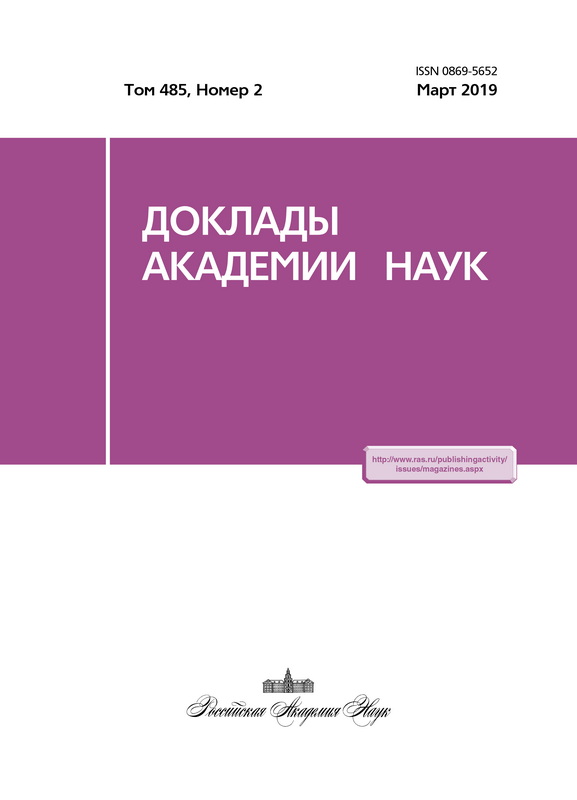Physical fatigue and the morfofunctional state of myocardium in experimental chronic stress
- Authors: Kondashevskaya M.V.1, Tseylikman V.E.2, Komelkova M.V.2, Lapshin M.S.2, Sarapultsev A.P.3,4, Lazuko S.S.5, Kuzhel O.P.5, Manukhina E.B.2,6,7, Downey H.F.2,7, Chereshneva M.V.3, Chereshnev V.A.3,4
-
Affiliations:
- Research institute of human morphology
- South Ural State University
- Institute of Immunology and Physiology, Ural Branch of Russian Academy of Sciences
- Ural Federal University
- Educational Establishment Vitebsk State Order of Peoples' Friendship Medical University
- Institute Of General Pathology And Pathophysiology
- University of North Texas Health Science Center
- Issue: Vol 485, No 2 (2019)
- Pages: 247-250
- Section: Physiology
- URL: https://journals.eco-vector.com/0869-5652/article/view/12863
- DOI: https://doi.org/10.31857/S0869-56524852247-250
- ID: 12863
Cite item
Abstract
The relationship between skeletal muscle fatigue and morpho-functional alterations in the myocardium was analyzed for the first time in Wistar male rats exposed to chronic stress. Post traumatic stress disorder (PTSD) was associated with signs of increased oxidative stress, which apparently induced the changes in cardiomyocyte structural components and the acceleration of skeletal and muscular fatigue.
About the authors
M. V. Kondashevskaya
Research institute of human morphology
Author for correspondence.
Email: marivladiko@mail.ru
Russian Federation, Moscow
V. E. Tseylikman
South Ural State University
Email: marivladiko@mail.ru
Russian Federation, Chelyabinsk
M. V. Komelkova
South Ural State University
Email: marivladiko@mail.ru
Russian Federation, Chelyabinsk
M. S. Lapshin
South Ural State University
Email: marivladiko@mail.ru
Russian Federation, Chelyabinsk
A. P. Sarapultsev
Institute of Immunology and Physiology, Ural Branch of Russian Academy of Sciences;Ural Federal University
Email: marivladiko@mail.ru
Russian Federation, Ekaterinburg;Ekaterinburg
S. S. Lazuko
Educational Establishment Vitebsk State Order of Peoples' Friendship Medical University
Email: marivladiko@mail.ru
Belarus, Vitebsk
O. P. Kuzhel
Educational Establishment Vitebsk State Order of Peoples' Friendship Medical University
Email: marivladiko@mail.ru
Belarus, Vitebsk
E. B. Manukhina
South Ural State University;Institute Of General Pathology And Pathophysiology;University of North Texas Health Science Center
Email: marivladiko@mail.ru
Russian Federation, Chelyabinsk;Moscow;Fort Worth
H. F. Downey
South Ural State University;University of North Texas Health Science Center
Email: marivladiko@mail.ru
Russian Federation, Chelyabinsk;Fort Worth
M. V. Chereshneva
Institute of Immunology and Physiology, Ural Branch of Russian Academy of Sciences
Email: marivladiko@mail.ru
Russian Federation, Ekaterinburg
V. A. Chereshnev
Institute of Immunology and Physiology, Ural Branch of Russian Academy of Sciences;Ural Federal University
Email: marivladiko@mail.ru
academician of the RAS
Russian Federation, Ekaterinburg;EkaterinburgReferences
- Edmondson D., von Kanel R. Post-Traumatic Stress Disorder and Cardiovascular Disease // Lancet Psych. 2017. V. 4. P. 320-329.
- Pitman R.K., Rasmusson A. M., Koenen K. C., et al. Biological Studies of Post-Traumatic Stress Disorder // Nat. Rev. Neurosci. 2012. V. 13. P. 769-787.
- Koenen K.C., Sumner J. A., Gilsanz P., et al. Post-Traumatic Stress Disorder and Cardiometabolic Disease: Improving Causal Inference to Inform Practice // Psychol. Med. 2017. V. 47. P. 209-225.
- Oddone A.E., Dennis P. A., Calhoun P. S., et al. Orthostatic Hypotension in Young Adults with and without Posttraumatic Stress Disorder // Psychol. Trauma. 2015. V. 7. P. 229-233.
- Ebner K., Singewald N. Individual Differences in Stress Susceptibility and Stress Inhibitory Mechanisms // Curr. Opin. Behav. Sci. 2017. V. 14. P. 54-64.
- Zoladz P.R., Park C. R., Fleshner M., et al. Psychosocial Predator-Based Animal Model of PTSD Produces Physiological and Behavioral Sequelae and a Traumatic Memory Four Months Following Stress Onset // Physiol. Behav. 2015. V. 147. P. 183-192.
- Sapolsky R.M., Romero L. M., Munck A. U. How Do Glucocorticoids Influence Stress Responses? Integrating Permissive, Suppressive, Stimulatory, and Preparative Actions // Endocr. Rev. 2000. V. 21. P. 55-89.
- Lazuko S.S., Kuzhel O. P., Belyaeva L. E., Manukh- ina E. B., Fred Downey H., Tseilikman O. B., Komel- kova M. V., Tseilikman V. E. Posttraumatic Stress Disorder Disturbs Coronary Tone and Its Regulatory Mechanisms // Cell. Mol. Neurobiol. 2018. V. 38. P. 209-217.
- Клиническая лабораторная аналитика. Т. II. Частные аналитические технологии в клинической лаборатории / Под ред. В.В. Меньшикова. М.: Лабинформ-РАМЛД, 1999. 352 с.
- Волчегорский И.А., Долгушин И. И., Колесников О. Л., Цейликман В. Э. Экспериментальное моделирование и лабораторная оценка адаптационных реакций организма. Челябинск: Изд-во Челяб. гос. пед. ун-та, 2000. 167 с.
- Дубинина Е.Е., Бурмистров С. О., Ходов Д. А., Поротов И. Г. Окислительная модификация белков сыворотки крови человека, метод ее определения // Вопр. мед. химии. 1995. Т. 41. № 1. С. 24-26.
- Chandramouli C., Varma U., Stevens E. M., et al. Myocardial Glycogen Dynamics: New Perspectives on Disease Mechanisms // Clin. Exp. Pharmacol. Physiol. 2015. V. 42. P. 415-425.
Supplementary files







